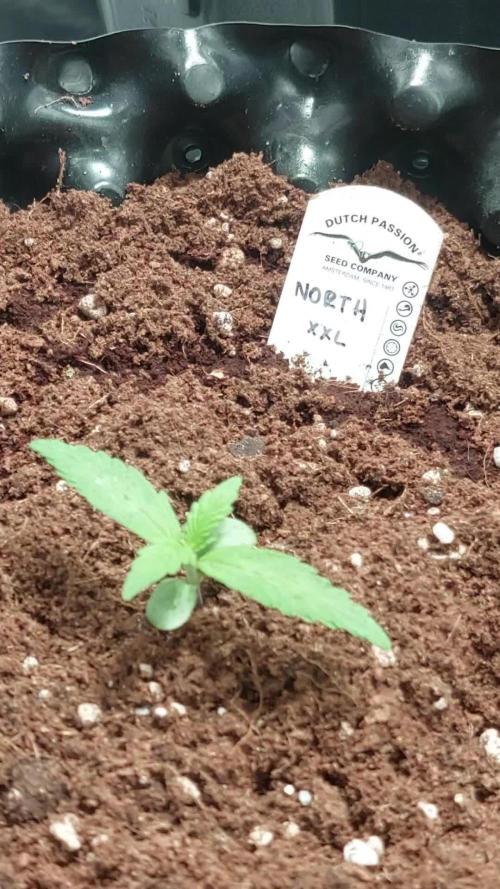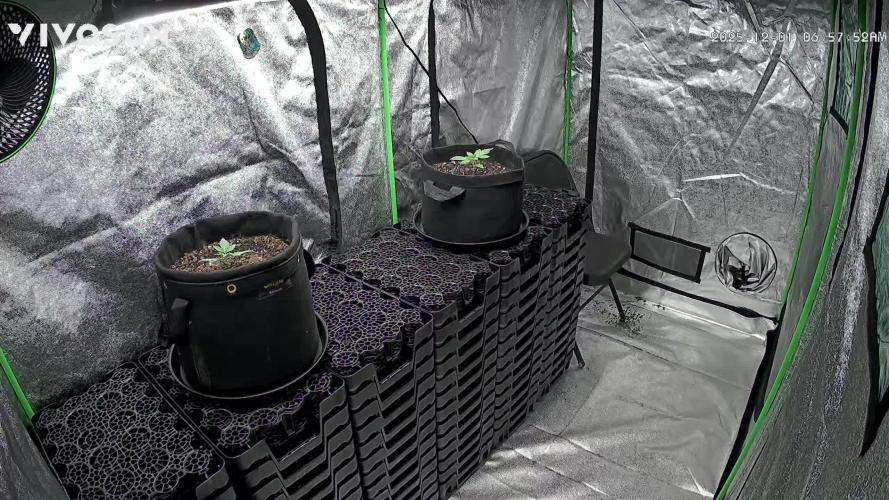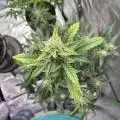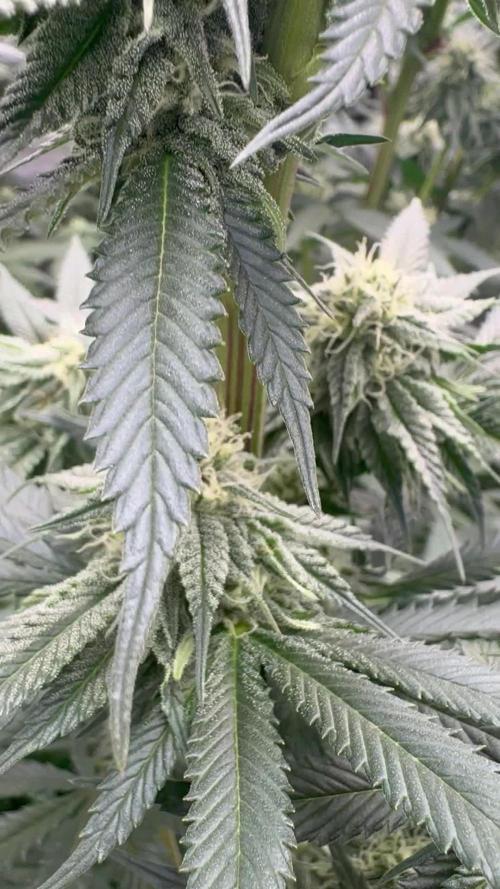The Grow Awards 2026 🏆 

































Likes
Comments
Share


@fridge
Follow
End of week 6 flower 😎 | buds are swelling up and getting more purple | you can already smell a strong permanent marker note | had to install yoyos since the stems started to bend quite hard
Processing
Likes
8
Share


@Max1973
Follow
Day 14 - Clay balls arrived, all looks good.... 😎
**the rust and damage on the first leaves is nothing to worry about,
the ice cream container water level dropped below the root level, fixed it,
but was cool to learn how fast hyrdo dmg can occur.... 👍
Day 17 - Lookin good... vid....
👍😎👊
Likes
10
Share


@BodyByVio
Follow
This week I Supercrop all the plants and spred them out over both lights. One more week of Veg and they are ready to explode
Check me out on Instagram @growmorestressless
Likes
24
Share


@TerpTurtle
Follow
White Truffle x Red Pop by Detroit Seed Co
BuildASoil 3.0 LOYAL TO THE SOIL
Strawberry truffle | Vivosun 2x4 | Mars hydro sp3000 | 7 gallon pot
Chem 91 x Red pop | AC infinity 2x3 | AC Infinity Iongrid 24 | 5 gallon pot
Likes
12
Share


@Kakui
Follow
Veg32, gran defoliación y Lollipop, riego con 2.0 EC y 6.2 pH. Están entre 25~28 centímetros de altura. En esta misma etapa en el cultivo anterior, estaban solo de 20cm, eso quiere decir que hasta ahora el crecimiento ha sido más eficiente.
Likes
1
Share


@BushDoctor740
Follow
These 3 beautiful plants are doing fantastic and took off like a 🚀.I spread them open by tieing down all the branches to get that light deeper and widen them out.I currently have 3 autos that a previous grow from fast buds produced seeds which look amazing in the 5x5 with them that will finish around the time I want to flip to flower :).Light intensity has been increased to 60 percent power and they are taking it well.Ive been giving recharge tea and some cal mag they were top dressed with Gaia green 4,4,4 and doing fine.It definitely smells very strong in the tent which I thought it was the autos but the short photo I’ll start naming plant #2 is very strong skunky smelling early on no flower yet.My goal will be to remove the autos and fill the 5x5 with these 3 healthy photos.
Likes
1
Share


@Nickeluring
Follow
It is so very hot now every day here. All my girls are suffering from the heat and they need to be watered very frequently. I avoid drying them out completely.
Both plants are doing well in the heat. I prefer the structure of the mainlined plant.
Processing
Likes
1
Share


@Tri_Op
Follow
Have reduced feed to half strength of Cycos Platinum range nutrients which seems to be perfect for the Phatt Fruity. Weight is starting to be put on and colas are starting to droop, may have to tie them up to support the weight in the coming weeks (hopefully)
Likes
39
Share


@Ginger_gnome
Follow
Fucking trees!!! Plants just broke my indoor plant height record by 2" now. I don't think this is going to brake my gram records tho. Compared to my other tent the buds are a lot smaller and then 2 of the plants have had issues since the start and don't have very many bud locations on them. But who knows they might suprising me at the end of the grow.
Plant sizes
Brain cake #1 - 51"
Brain cake #2 - 53"
Brain cake #3 - 48"
Brain cake #4 - 32"
Well that's all for this tent. Happy growing everyone's!!!
Likes
Comments
Share


@deseed_uy
Follow
Esta semana las molesté bastante, estuvieron afuera dos dias mientras limpiaba toda la carpa pero ya quedo todo instalado y controlado.
La black domm quemada se recuperó, la daikiri sigue estancada.. puse a germinar la ultima q quedaba y no salió asiq supongo fue falla del pack. Las demas vienen hermosas y ahora se van para arriba con todas las condiciones lo mas posible ajustadas, lo unico malo es que sigo sin medidor asiq estoy regando a ojo de temoeratura y ph
Likes
17
Share


@EduardoLV885
Follow
En estas semana se agrego un pk para se terminen de engordar esas flores que estan llenas de tricomas , con un aroma muy fuerte y flores muy bonitas
Processing
Likes
10
Share


@Barcelona_Farmers710
Follow
Entramos en semana 4 de flora con un calor extremo con el Lec... a la espera de renovar equipo a led pero tendremos que acabar con Lec está tirada farmers, a pesar de todo tiene bastante resina y huele bastante bien sobre todo la Sweet Skitllez!🍁
Likes
3
Share


@BrigadeDesTerps
Follow
Jours 14 : 26/10/24
Elle se porte bien
Elle est devenue beaucoup plus violacée et attrape quelques nuance de rouge. La croissance continue, on voit encore des signes au niveau des nouvelles feuilles, elles sont verte mais encore remplie de trichomes.
L’odeur est encore agréable, me donne envie de le sécher et de l’extraire!
Hâte de voir la suite 👨🏻🌾
Me restais un peux d’espace j’ai mis un mini rosier il a l’air de se plaire
Likes
Comments
Share


@AutoGirls420
Follow
Hey guys, we’ve made it to week 1. So far, everything is going well!
Likes
2
Share


@CannaIGrow
Follow
Plant is growing well. Probably the prettiest one outta the bunch so far.
Processing
Likes
11
Share


@ganjaman24
Follow
They’re looking extremely healthy..gave em their first nute feed with the last watering seem to be doing fairly well..fimmed the GG and LST. Did not touch the unkown as it looks smaller to be the same age. Running GHE base line with few extra supplements.
****UPDATE****
Both are LST’d..might rethink the way I tie them. Going for a “coil” type look, we’ll see though. They’re looking great! Hoping for females!
Likes
24
Share


@PrairieFrostGrow
Follow
**** Week 13 growth - February 27 to March 5, 2021 - Week 4 Flower *****
This girl weathered this week better than others in the tent due to her height......some times it pays to be short😂......the light stress was less for her. She is certainly not growing a lot of bud so hope that what we do yield is fire💪 She is a pretty girl with leaves up and a very nice colour. Curl from heat is minimal or from other factors. She is starting to show some small signs of a little too much nitrogen but over all very nice. Frost production is taking off later in the week and showing good levels on fan leaves as well. Trusting there is going to be some good swelling of the buds in the weeks ahead. She took longer through transition week and I would say she is actually a good 5 days behind the other girls so she may run a little longer in flower at the end as well getting more in the 10 week range??? Time will tell.
Light intensity increased this week. Pushed up to 525 watts and then to 550 watts at the end of the week. This got the a little hot by the end of the week though. Working with a new light and finding the sweet spots takes a run or two. Learning how the girls grow anyway so the whole run is a lot of learning......its all good😀
Nutrients were pushed a little at the end of last week and the start of this week so backing off a bit more again. Given that they were pushed with light intensity they started showing some signs of nutrient issues. It’s good though as there is reaction time and back off to plain water feed for a couple of days at the end of the week and into week 5. Week 5 is going to be the start of the last stage of flower feed and work with that for two weeks, then stop feeding at the end of week 6........the plan so far anyway. Mimosa is longer strain though so they may get another week.👍
Little more detail.......
Feb 27/21 - Day 22
- big feed day
- all IPP line plus silica @ 1ml, CalMag @ 1ml, Rezin @ 1.5ml, enzymes @ 1.5ml
- 1650ppm and 6.1pH - 4L
Feb 28/21 - Day23
- Microbe day but also added some CalMag
- Natures Candy @ 1.5ml, Recharge @ 1/2 tsp/gal, Magnifical @ 1.5ml, Micro @ 1ml, Bloom 1.5ml, Terpinator @ 2ml
- 950 ppm and 6.0pH - 3L
- leaf colour almost looks light today.
Mar 1/21 - Day 24
- dry out day.
Mar 2/21 - Day 25
- plain water
- 300ppm and 6.1 ph - 4L
- light power pushed up to 550 watts today.
- (too much from 16” to 20”........note!!)
Mar 3/21 - Day 26
- plain water with two suppliiments
- Terpinator @ 3ml, Rezin @ 2ml.
- 525ppm & 6.0pH - 4L
- stripped some leaves today......sticky in the middle😃😃👍👍
Mar 4/21 - Day 27
- no water added today
- light power reduced today 450 watts.
- been going too hard with intensity. Seeing leaf curl on other girls in the tent.
- joys of diagnosing cannabis😂
- starting with backing off light and reduce ppm going in but not the ml👍
Mar 5/21 - Day 28
- hit with microbes again to help with stresses.
- recharge @ 1 tsp/gal, Nature’s Candy @ 1.5ml
- 375ppm and 6.0pH - 3L
Moving right along we are through 4 weeks now and moving past the middle of flower.
























